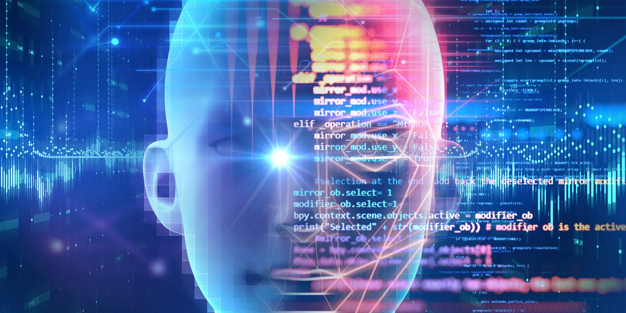
Data is the new resource in today's age of AI. Data collection and annotation are fundamental in machine learning (ML) and developing great artificial intelligence (AI). They are essential steps to power AI systems, training them to learn and then make reasonable decisions. Read further to get more about AI data collection and annotation in this blog article.
Data collection is the process of gathering and measuring information from countless sources. By analyzing large datasets, AI systems are enabled to learn and make decisions. They are programmed to identify different patterns, offer insights, and give predictions or suggestions based on the data they process. Simply put, without data, AI would not have the cornerstone to function effectively.
There are many types of data collection for AI models. Each of them has different characteristics.
1. Image Data Collection: By offering a variety of images, image datasets facilitate effective pattern learning and recognition in advancing AI models, particularly those involved in computer vision tasks.
2. Video Data Collection: Video data collection is the process of gathering a certain type of video footage to train and enhance machine learning models. This type of data collection is necessary for models designed for motion analysis, object tracking, and temporal understanding.
3. Audio Data Collection: Audio data collection involves gathering and analyzing audio and speech data. If your AI models focus on audio processing, speech recognition, and natural language understanding, high-quality audio datasets ensure the accuracy of your AI and machine learning solutions.
4. Text Data Collection: To enhance the ability to understand and analyze the human language of AI systems, text datasets for natural language processing (NLP) are crucial. It involves collecting and categorizing a variety of text datasets, including books, social media posts, handwritten notes, spoken language transcripts, etc.
5. 3D Point Cloud Data: Collecting spatial data representing the physical world in three dimensions, reliable 3D point cloud data helps enhance the understanding of the shape, size, and position of objects in space, such as autonomous navigation, robotics, and virtual reality.
After understanding the basic knowledge of data collection, here are some methods for AI data collection.
1. Open Source Datasets
It is easy to find several free datasets that can be used for machine learning, such as Kaggle, Google Dataset Search, and UCI Machine Learning Repository. These datasets give a simple solution to get large amounts of data that can build a foundation for an AI project.
However, there are some factors to think about.
First is security and privacy. The source of datasets must be evaluated, so you need to make sure that you perform under the security measures and in compliance with data privacy guidelines.
In addition, relevancy is also a crucial factor. Different datasets have different examples of data. In order to help your AI system run efficiently, the datasets that you use should be relevant to your specific use case.
2. Synthetic Datasets
With the word "synthetic", synthetic data is artificially generated rather than collected from real-world events. In other words, synthetic data generated from computer simulations or algorithms provide an alternative to real-world data.
Although synthetic data are artificial, they still reflect real-world data in a mathematical way. Indeed, synthetic datasets reveal the future of modern deep learning. For fields with strict rules about security and privacy, using synthetic datasets could be an excellent way to develop AI models.
3. Collect Custom Data
Gathering raw data from the field that suits your specific needs is an ideal way to train a machine learning algorithm. This can mean web scraping to capture images, audio, or other types of data and create a custom program.
When it comes to the type of data required, data collection through crowdsourcing is an option. Types of data that are collected can range from video to audio, gestures, handwriting, speech, or text. Using a custom dataset to generate data that best fits your requirements will take more time than an open-source dataset, but the benefits of accuracy, reliability, as well as data bias, make it trustworthy.
In search of helpful datasets, Surfing Tech offers you speech recognition datasets, face recognition datasets, autonomous driving datasets, etc. You can contact us to get more information about the services.
Once raw data has been collected, the next crucial step is data annotation. This process involves carefully labeling, categorizing, and organizing the data to enhance its quality and usefulness. By doing so, the data can be more effectively understood and utilized by AI algorithms.
Data Annotation involves labeling and categorizing data in a way that makes it understandable to AI models, enabling them to process and interpret information as much as a human would. This can include categorizing images, transcribing audio into text, annotating video frames for object recognition, or tagging text data for sentiment analysis. With meticulously data annotation, AI models are trained on accurately labeled datasets, leading to more reliable outcomes.
1. Image Annotation: Image annotation involves identifying and labeling elements in digital images to create a dataset for training machine learning models.
2. Video Annotation: This extends the principles of image annotation to moving footage, especially for interpreting the dynamic sequences of events like traffic monitoring and sports analytics.
3. Audio Annotation: Audio annotation transcribes and tags audio files, forming the foundation to advance voice and speech recognition technologies.
4. Semantic Annotation: Pivotal for text-based AI, semantic annotation links data to its semantic meaning, facilitating context-aware natural language processing applications.
5. Object Detection and Localization: Essential for applications requiring precision, such as inventory tracking and autonomous driving, this type of annotation identifies and locates objects in an image or real 3D space.
6. Natural Language Processing (NLP): NLP annotation involves parsing and tagging textual data to teach machines language understanding, enhancing the intelligence behind chatbots and virtual assistants.
7. Sentiment Analysis: This annotation type assesses the emotion behind text data, providing insights into human opinions and behaviors across digital platforms.

Data annotation in AI requires careful planning and execution to ensure that the AI model learns effectively from the labeled data since annotation quality directly impacts the performance and accuracy of the AI model.
1. Understanding the Objective
Before starting the annotation, it is essential to understand the goal of the AI model. This includes the type of data needed, the desired outcomes, and the specific tasks the model will perform.
2. Data Collection
Gather the raw data that will be annotated. This data can come from various sources, such as images, text, audio, or video recordings.
3. Data Preprocessing
Clean and prepare the data for annotation. This may involve removing irrelevant or duplicate entries, normalizing formats, and ensuring data quality.
4. Defining Annotation Guidelines
Create clear and detailed guidelines for the annotation process. These guidelines should specify how each type of data should be labeled, including any categories, classes, or attributes.
5. Performing the Annotation
Annotators label the data according to the defined guidelines. For instance, in text data, it could mean tagging parts of speech or entities.
6. Quality Control
Regularly review the annotated data to ensure accuracy and consistency, which may involve spot checks, peer reviews, or automated validation.
7. Feedback and Iteration
Annotators should provide feedback on the process, and guidelines may be updated based on this feedback. Iteration is common to refine the quality of annotations.
8. Data Export
Once the annotation is complete and verified, export the labeled data in a format compatible with the AI model's training process.
9. Model Training
The annotated data is then used to train the AI model. The model learns from the labeled data to perform tasks such as classification, object detection, or language translation.
10. Evaluation and Testing
After training, the AI model is evaluated on a separate dataset to measure its performance. If the results are not satisfactory, the model may be retrained with additional or revised annotations.
It is evident that the collection and annotation of data are not merely technical tasks, but are the lifeblood of modern Artificial Intelligence. The rigorous process of gathering and annotating data is crucial in enabling AI systems to surpass human limitations, providing us with valuable insights and solutions to complex problems. However, with great power comes great responsibility. As we continue to innovate and push the boundaries of AI, we must remain vigilant in our focus on ethical considerations, data privacy, and the fair and transparent use of information. Only by striking a balance between technological advancement and ethical stewardship can we fully harness the potential of AI to create a better and more interconnected world.